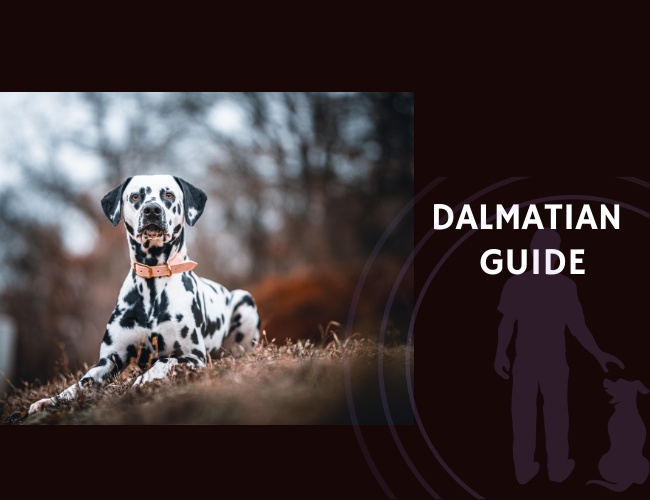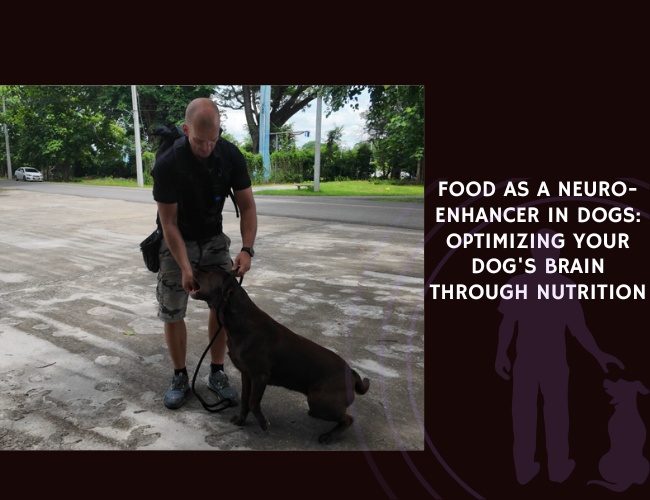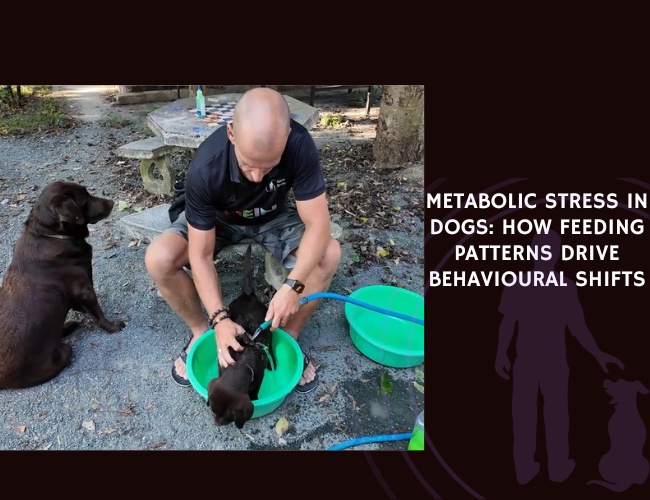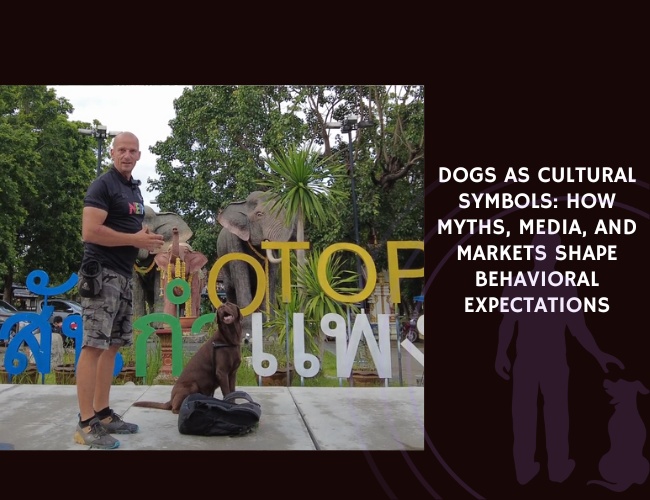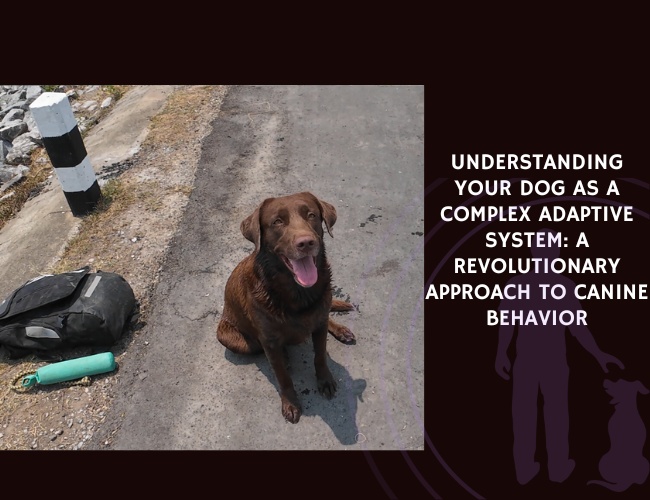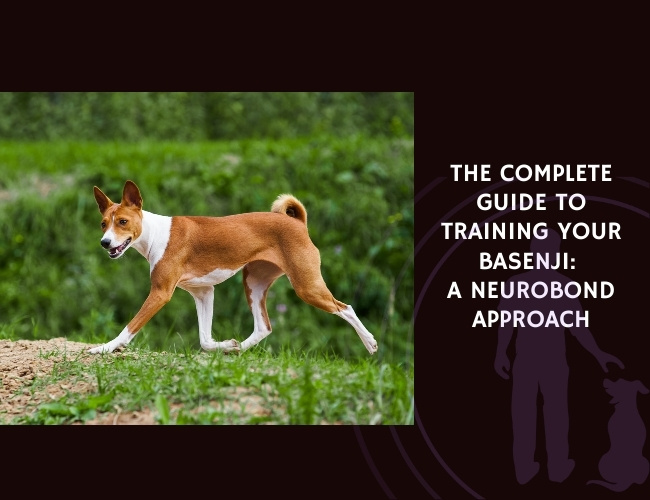Introduction to the Dalmatian Breed
A Storied Past: From Horse-Drawn Carriages to Firehouse Fame
Dalmatians have a fascinating history. Originally bred to run alongside horse-drawn carriages, these dogs served a crucial role by protecting horses and passengers from threats along the road. Their impressive stamina and watchful presence made them excellent carriage companions, and over time, they became popular with the fire service. When fire engines were pulled by horses, Dalmatians cleared the way and kept the horses calm, quickly becoming a well-loved firehouse mascot and symbol of bravery. 🚒
Unmistakable Look and Remarkable Personality
If you picture a Dalmatian, you likely imagine their sleek, athletic body covered in bold black or liver spots. This spotted coat is not just beautiful, but also one of the most instantly recognizable in the dog world. Dalmatians are medium-sized dogs, sturdy and muscular, ready for action at a moment’s notice.
Their personality is just as unique. Dalmatians are energetic and need a lot of activity to stay happy. They are known for their sharp intelligence and strong loyalty to their families. You may also notice that they have a strong prey drive—a trait from their working days—which means they love to chase and play. This drive, combined with their alert nature, can make them excellent watchdogs. However, their high energy and excitement for life can sometimes lead to mischievousness if their exercise and mental needs are not met. It’s important to understand this breed’s blend of stamina, smarts, and loyalty if you want a happy household.
What You’ll Learn in This Guide
This guide is designed to give you professional and supportive advice for every stage of Dalmatian care—whether you are just curious or ready to welcome one into your family. You can expect informative insights on their temperament, effective training methods, exercise routines, and breed-specific nutrition. We’ll address health concerns and offer guidance on grooming, finding a responsible breeder or rescue, and long-term care. Our professional team is here to provide you with informative guidance, ensuring a supportive experience as you discover what makes Dalmatians special.
Ready to learn more about what it’s like to share your life with these lively, spotted companions? Let’s explore the important aspects that make this breed both rewarding and challenging.
Dalmatian Temperament and Behavior
Energetic, Intelligent, and Loyal: The Dalmatian Personality
The Dalmatian is an energetic and spirited companion. You will notice their enthusiasm for life in everything they do. Bred for stamina and endurance, these dogs thrive on activity and mental challenges. Their intelligence shines through in training sessions and play, although it may also mean they’ll quickly become bored with repetitive routines.
Loyalty is at the heart of the Dalmatian’s temperament. These dogs form deep bonds with their families and often choose a favorite person. If you are looking for a dog that wants to be truly involved in family life, the Dalmatian is a fantastic choice. However, their strong prey drive, a trait inherited from their days as carriage dogs, means they may chase small animals if not managed properly.
Social Bonding and Play Behavior
Once a Dalmatian bonds with you, expect a dog who is playful and affectionate at home. They enjoy interactive games and regular playtime, which helps strengthen the connection between owner and dog. Fetch, tug-of-war, and even agility exercises can be staples of your routine together. Dalmatians often get along well with children and can be compatible with other dogs if socialized early.
You’ll see them thrive in group activities and they genuinely enjoy being part of household routines. However, keep in mind their vigilant nature means they may act reserved or even aloof with strangers. It’s their way of watching out for their pack.
Common Behavioral Challenges
Being so energetic, Dalmatians need plenty of activity and mental stimulation to avoid boredom. If their needs are not met, they can become hyperactive or develop stubborn behaviors. Hyperactivity might manifest as excessive barking, chewing, or attempts to escape. Reactivity, especially toward unfamiliar dogs or experiences, is also common if a Dalmatian is not properly socialized. Early and ongoing social experiences, from 8 to 16 weeks, can help reduce fear-based responses and make them more comfortable around new people and places.
Without adequate interaction and enrichment, Dalmatians may display anxiety or destructive habits. You play a vital role in providing a supportive environment that matches their active minds and bodies.
This professional and informative understanding of Dalmatian temperament will serve you well as you build a strong bond with your companion.
Training Your Dalmatian
Positive Reinforcement: The Key to Success
Dalmatians respond best to informative, professional, and supportive training methods that rely on positive reinforcement. This means you should reward good behavior with treats, praise, or toys. Avoid punishment or harsh corrections, as these can damage trust and make training less effective. Consistent routines, clear cues, and calm, encouraging voices help your Dalmatian understand what is expected of them. By using rewards as motivation, you’ll build a stronger bond and see faster progress in basic obedience tasks like sit, stay, and recall.
Early Socialization: Critical for Balanced Behavior
Between 8 and 16 weeks, early socialization is vital for your Dalmatian’s lifelong confidence and social skills. During this time, introduce your puppy to many different sights, sounds, and people. Visit safe parks, let them meet friendly dogs, and expose them to things like car rides or vacuum cleaners. Positive experiences reduce the risk of fear-based reactions and teach your Dalmatian to cope with new situations. Group puppy classes are also great for practicing manners and building friendly behaviors in a controlled setting.
Mental Stimulation and Problem Prevention
Because Dalmatians are highly intelligent and active, they need mental challenges as much as physical ones. Puzzle toys, scent games, and learning new tricks keep their minds engaged. Training can go beyond basic commands—teach your Dalmatian agility skills, practice hiding treats for them to find, or enroll in canine sports. Mental stimulation helps prevent boredom-related problems, such as barking, chewing, or digging. If your Dalmatian seems restless or starts to act out, it’s often a sign they need more activities that challenge their minds and bodies.
A thoughtful approach to training builds a harmonious relationship and sets a strong foundation for health and happiness. With a well-trained Dalmatian, you’re ready to embrace the next step in their care.

Exercise Requirements and Physical Needs
Historical Roots and Modern-Day Energy
If you live with a Dalmatian, get ready to be active! Dalmatians have a long history as carriage dogs, running beside horses for long distances and guarding travelers. This bred an impressive stamina and a true love for movement. Even as beloved companions today, their bodies and minds demand regular, vigorous exercise every single day.
Daily Physical Activity
You should aim for 1-2 hours of exercise each day with your Dalmatian. This cannot be swapped out for just backyard time — these dogs need real engagement! Ideal activities include:
- Long walks or brisk jogs to tap into their impressive endurance
- Hiking trips, where they can explore new scents and terrains
- Swimming (if your Dalmatian is introduced safely and enjoys water)
- Energetic play, such as fetch, frisbee, or tug-of-war
- Agility courses, which combine focus, obedience, and speed
A simple short walk is not enough for this breed. Mixing up activities keeps them happy and mentally stimulated.
The Role of Mental Stimulation
Physical activity alone is not enough. Dalmatians also need games and challenges to keep their bright minds occupied. You can rotate puzzle toys, teach new tricks, or create scent games indoors and out. Activities that blend exercise with thinking time, like canicross or searching for hidden treats, make a big difference. Not only do these keep boredom away, but they also reduce the risk of behavior issues.
Risks of Insufficient Exercise
When a Dalmatian doesn’t burn off energy each day, problems can quickly arise. Signs of under-stimulation include:
- Restlessness or pacing
- Destructive chewing or digging
- Excessive barking, whining, or even trying to escape the yard
- Weight gain and decreased muscle tone
A tired Dalmatian is a happy Dalmatian. Meeting both physical and mental needs supports their long-term health and your family’s happiness.
Next, you will discover how their daily movement ties into their special nutritional needs and optimal health care.
Nutrition and Dietary Considerations
Special Dietary Needs
Dalmatians have some unique nutritional needs, especially due to their risk for hyperuricosuria (HUU). HUU is a genetic condition where the body excretes too much uric acid, increasing the chance of urinary stone formation. Feeding your Dalmatian a low-purine diet is crucial to reduce this risk.
Foods to avoid in your Dalmatian’s diet include organ meats like liver and kidney, as well as sardines and anchovies. Instead, focus on high-quality proteins such as chicken, turkey, and eggs. These are lower in purines and still provide the protein your energetic Dalmatian needs.
Puppies have different dietary needs compared to adults. They require diets designed for growth, with extra calories and more protein. For adult Dalmatians, balanced meals that maintain lean muscles while protecting their joints are ideal. As they age, you might need to adjust their diet with your veterinarian’s help, possibly adding supplements such as joint support.
Caloric and Macronutrient Requirements
Given their active nature, Dalmatians generally need a high-calorie diet. The best meals offer a balance between quality proteins for muscle health and enough carbohydrates to fuel their exercise and play.
Fat is also important, but should be managed to avoid excess weight.
Adjust food portions to your dog’s age, activity level, and overall health. Growing puppies, athletic adults, and senior Dalmatians all benefit from personalized meal plans. Your veterinarian can recommend exact amounts and supplements based on your individual dog’s needs.
Foods to Avoid and Hydration
Besides high-purine foods, avoid any ingredients that could trigger allergies or skin sensitivities, issues that Dalmatians can face. Artificial additives, fillers, and some grains might contribute to problems.
Proper hydration is especially important! Make sure your Dalmatian has access to fresh water at all times—this supports kidney function and helps flush excess uric acid from the body. In warmer weather or after extra activity, encourage more frequent water breaks. 🥛
Understanding these nutrition basics will help keep your Dalmatian healthy and full of energy throughout their life.
Energy. Spots. Loyalty.
Dalmatians aren’t just a look—they’re a lifestyle.
With their bold spots and fiery stamina, these dogs don’t just fill a home—they electrify it. Originally bred to run alongside carriages and protect firehorses, Dalmatians are built for motion, watchfulness, and loyalty.
Their drive needs direction—or it becomes destruction.
Untrained or under-stimulated, a Dalmatian will invent their own entertainment—often at the expense of your shoes, furniture, or peace and quiet. This isn’t misbehavior—it’s unmet need. These dogs don’t just want attention; they require structure, challenge, and active leadership.
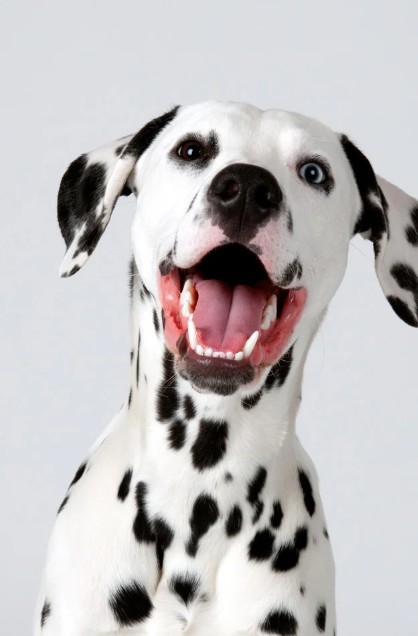
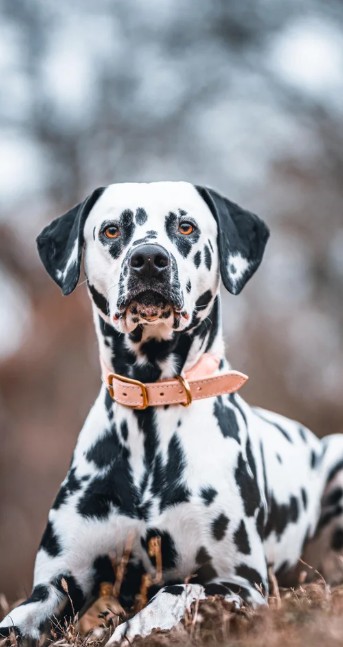
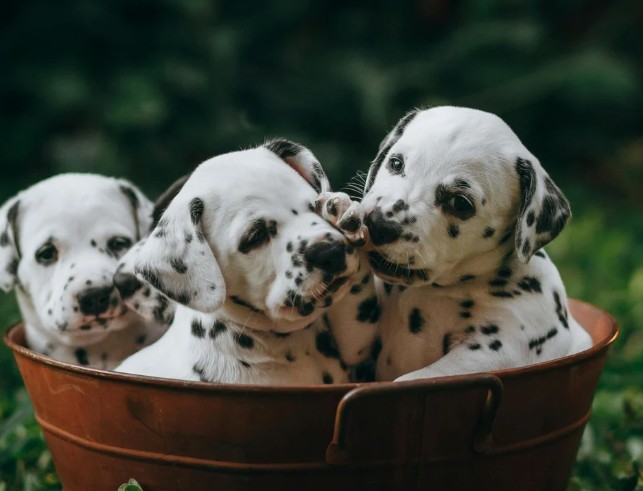
Their bond runs deep—but only if you show up.
Once you’ve earned a Dalmatian’s trust, you gain a shadow, a workout buddy, and a fiercely loyal friend. They thrive on routine, eye contact, and shared adventure.
Health Concerns and Management
Understanding Common Health Challenges
Dalmatians are energetic and full of life, but they are also known for a few breed-specific health concerns. Being an informed and attentive owner is essential to support your Dalmatian’s well-being. Our professional guidance will help you recognize, manage, and prevent these issues to ensure your companion enjoys a supportive and healthy life.
Congenital Deafness
One unique concern in Dalmatians is congenital deafness. This condition affects a significant percentage of the breed, sometimes in one ear (unilateral) or both (bilateral). It is commonly associated with the white coat pigmentation that gives Dalmatians their distinctive look. The most reliable way to check for hearing issues is the brainstem auditory evoked response (BAER) test. Professional breeders should have all puppies BAER tested, and you should request the results when considering a puppy. If your Dalmatian is deaf, there are many management strategies to help them thrive, such as using hand signals for communication and keeping them safe from hazards like traffic. With patience and a supportive routine, deaf Dalmatians can lead full and happy lives.
Hyperuricosuria (HUU)
Hyperuricosuria (HUU) is another health issue common in this breed. Dalmatians have a genetic tendency to process uric acid differently, which means they are more likely to develop urinary tract stones. The best way to prevent this is by feeding your dog a low-purine diet—avoid foods like organ meats and certain fish. Regular checkups and urine monitoring with your veterinarian will help catch any problems early, keeping your dog healthy and comfortable. Always provide fresh water, as hydration supports kidney function and reduces stone risk.
Allergies, Skin Sensitivities, and Joint Problems
Dalmatians may also experience allergies, skin sensitivities, and joint concerns such as hip dysplasia. Signs include red or itchy skin, excessive licking, or reluctance to jump or run. A professional and supportive partnership with your vet will help you identify triggers and select the right remedies. Sometimes a change in diet or a gentle shampoo can make a big difference. For joint health, consider supplements if recommended by your vet and keep your Dalmatian at a healthy weight to reduce stress on their joints.
By staying informed, monitoring your Dalmatian’s health, and partnering with trusted professionals, you create a caring environment where your dog can flourish. Moving forward, understanding your dog’s living space needs is the next step in their well-rounded care journey.
Creating the Ideal Living Environment
Space Needs and Home Suitability
Dalmatians are famous for their lively energy, and their living space should support their activity levels. While these dogs can adapt to apartment living, they will thrive best in homes with easy access to a yard or open area for running and play. Your Dalmatian needs space not just to roam, but also to express their natural athleticism. If you live in a smaller space, be sure to provide multiple daily outings for exercise and play. Without this, your Dalmatian may become restless or even destructive.
Social Compatibility
A well-socialized Dalmatian bonds deeply with family members and usually builds strong attachments to adults and children alike. However, early training and social exposure—especially between eight and sixteen weeks—is crucial. This helps them feel confident around new people and reduces the risk of fearful or aloof behaviors.
With children, Dalmatians are typically playful and affectionate but may be too energetic for very young kids. Always supervise play to ensure safety and teach children how to respect boundaries.
When introducing your Dalmatian to other dogs, proper socialization is again essential. Most Dalmatians can get along well with canine companions if introduced slowly and positively. However, due to their strong prey drive, they might not be suited to homes with small pets like hamsters, rabbits, or birds, as chasing is a common instinct.

Preventing Boredom: Enrichment and Stimulation
Keeping your Dalmatian mentally and physically engaged is one of the most supportive things you can do. Without enough to do, they may chew, dig, or find other creative ways to use their energy. Here are some enrichment ideas:
- Daily walks, runs, or games of fetch
- Agility or scent work activities
- Puzzle toys for treats and problem-solving
- Interactive games like hide and seek with favorite toys
Rotating enrichment activities helps keep your Dalmatian engaged and reduces the risk of developing behavioral problems tied to boredom or anxiety. Remember, an informed and proactive approach ensures a happy, harmonious home for both you and your Dalmatian.
Nurturing your dog’s environment sets the foundation for lifelong health and happiness, forming a strong bond between you and your spotted companion.
Grooming and Coat Care
Coat Maintenance for Your Dalmatian
Dalmatians are famous for their short, sleek coats covered in unique spots. While their fur might seem low-maintenance, it sheds steadily all year. To keep your home tidy and your dalmatian looking their best, weekly brushing with a soft bristle brush or grooming mitt is key. Brushing removes loose hairs and helps spread natural oils, which are important for skin and coat health.
You will likely notice fine hairs on your furniture and clothes. Regular grooming reduces this and keeps your dalmatian more comfortable. Starting grooming habits early makes the process enjoyable for both you and your pet.
Skin Sensitivity: A Dalmatian-Specific Challenge
Skin sensitivities are common with this breed. Dalmatians may develop allergies or irritation from harsh grooming products. Always choose gentle, dog-safe shampoos and conditioners. Look for items free from dyes and fragrances. If your dalmatian is itching, has rashes, or red spots, consult your vet for advice. Using the wrong products or neglecting their unique needs could cause skin infections or make allergies worse.
Some spots on your dog’s skin may look dark but are just pigment. If you see any raised, new, or bleeding spots, though, get them checked out right away for peace of mind.
Bathing Routine and Product Choices
Despite their white coloration, dals do not need frequent baths. In fact, bathing your dalmatian too often can strip away natural oils and cause dry, flaky skin. Aim to bathe your dog only a few times a year, or when they are noticeably dirty. In between, spot clean with a damp cloth.
When bath time does come, use lukewarm water and dog-specific shampoo. Make sure to rinse thoroughly, as leftover soap can irritate their skin. Afterward, dry your dalmatian well, especially in cooler weather.
A regular routine with brushing, gentle products, and the right washing schedule will keep your dalmatian’s coat shiny and healthy. Staying on top of grooming supports their overall well-being and helps you catch minor issues before they become big problems.
Transitioning now, understanding all aspects of caring for a dalmatian ensures a smooth and happy relationship for both you and your spotted friend.
Choosing a Dalmatian: Adoption and Responsible Breeding
Finding the Right Dalmatian for Your Home
When you decide to welcome a Dalmatian into your life, making an informed choice is key. Whether you choose a puppy from a breeder or adopt an adult through rescue, focusing on health and ethical care ensures both you and your new companion start off on the right paw.
Responsible Breeders and Health Testing
Look for breeders who support the health and future of the breed. Responsible breeders use brainstem auditory evoked response (BAER) testing to check for congenital deafness—a known issue among Dalmatians. They also perform genetic screening for hyperuricosuria (HUU), which helps prevent risky urate stones later. Don’t hesitate to ask breeders for proof of:
- BAER results for both parents
- Genetic screening showing both parents are clear of HUU
- Regular veterinary care and up-to-date vaccinations
When you visit, observe the puppies’ environment. A clean, safe, and enriching space shows a breeder’s professionalism and compassion. Reputable breeders are eager to answer your questions and may ask you about your lifestyle to ensure the best match.
Rescue Options and Adoption Considerations
Giving a home to a rescued Dalmatian is another loving choice. Many rescues provide health and temperament assessments, helping you find a dog well suited to your environment. When adopting, be prepared for some Dalmatians to have special needs. Common issues may include previous medical treatment or a need for patient socialization. Ensure you:
- Ask about the dog’s history and temperament
- Inquire about any ongoing health needs
- Meet the Dalmatian in a calm setting to assess your compatibility
Questions to Ask Before Bringing a Dalmatian Home
Before finalizing your decision, consider these essential points for an informative and supportive adoption:
- How much daily exercise and companionship can you offer?
- Do you have time for training and enrichment?
- Is your home environment suitable for a high-energy breed?
- Are you ready for the commitment of managing breed-specific health concerns?
Taking these steps ensures your Dalmatian gets the caring home they deserve, and you enjoy a fulfilling relationship with your new companion. 🐾
Now that you are prepared to find your Dalmatian, let’s continue by understanding what it means to live with them long-term and how to foster a lifelong bond.
Living with a Dalmatian: Long-term Considerations
Life Stages and Evolving Care
Dalmatians bring years of joy, activity, and loyalty to your life. You can expect a Dalmatian to live between ten and thirteen years, with each life stage needing thoughtful adjustments in care. Puppies require structure, gentle guidance, and plenty of positive interactions. As your Dalmatian matures, their exercise needs often peak, matched by their energy and enthusiasm. With age, you may notice a slower pace—senior Dalmatians still love company and gentle play but benefit from softer bedding, joint support, and relaxed strolls.
Preventive Health: Routine is Key
Proactive, preventive health care is the best way to help your Dalmatian enjoy every year to the fullest. Regular veterinary checkups, including screenings for breed-specific issues like congenital deafness and hyperuricosuria (HUU), are essential. Early detection of issues such as skin allergies or joint pain can keep problems manageable and improve quality of life. Good nutrition, exercise, mental stimulation, and prompt attention to signs of discomfort create a strong foundation for well-being.
- Schedule annual veterinary exams, and increase to biannual visits for older dogs.
- Maintain a low-purine diet to help prevent urinary stones.
- Keep up with vaccinations, parasite prevention, and dental care.
- Monitor for changes in appetite, mobility, or temperament.
Building a Lasting Bond
Understanding your Dalmatian’s unique personality fosters a rewarding relationship. These dogs thrive on interaction—regular play, training, and positive reinforcement strengthen trust. Dalmatians enjoy being part of family activities and need both physical and mental stimulation to stay happy. Adapt daily routines to your Dalmatian’s age and preferences, always making space for affection and companionship.
By staying informed and attentive to their evolving needs, you set the stage for a happy, healthy partnership with your Dalmatian that lasts through every stage of life.

